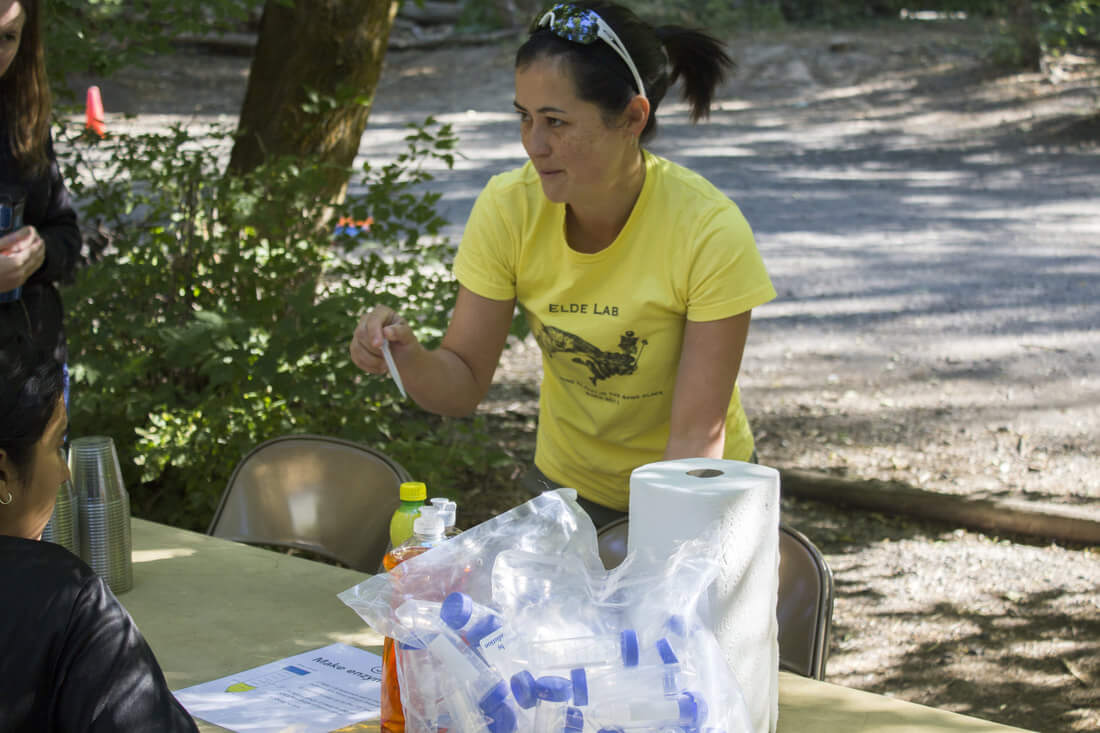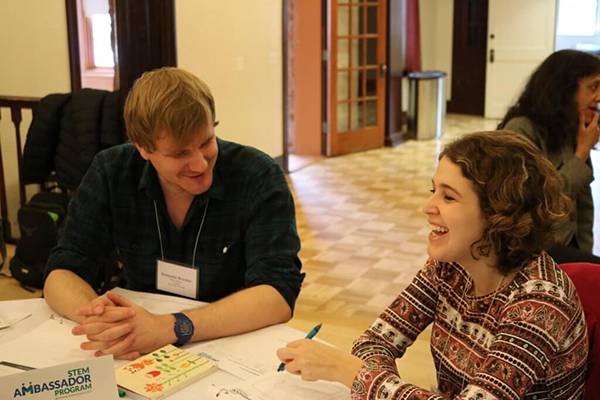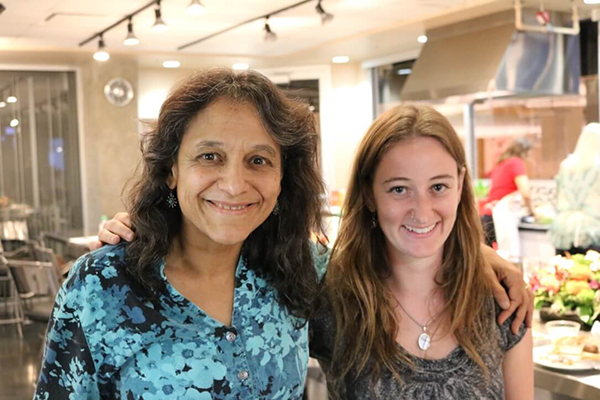Program Overview
Goals & Outcomes
 STEMAP aims to facilitate open-minded exchange between scientists and members of the
public.
STEMAP aims to facilitate open-minded exchange between scientists and members of the
public.
Engagement activities are designed to achieve one or more of the following objectives towards this goal:
- demonstrate that scientists and the focal group have shared values;
- reveal that scientists have “identities” outside of science and respect for focal group identities;
- manifest that the scientific community cares about the broader community’s well-being and opinions;
- demonstrate scientists’ desire to learn from and with the focal group; and
- increase connections between scientists and the community
STEMAP provides generalized training to guide Ambassadors in creating specialized engagement activities for a particular focal group. This training has allowed Ambassadors to engage a wide array of focal groups including those who do not or cannot engage with science in traditional ways, those who are underrepresented in the STEM workforce, and end-users of scientific research. In addition to the above objectives, STEMAP engagement activities may also communicate scientific information. However, science literacy objectives are secondary as research suggests that improving science literacy alone does not consistently lead to meaningful outcomes for the scientist and public.
As of 2024, over 250 Ambassadors in many different locations have successfully completed the program, partnering with more than 100 organizations and reaching thousands of participants.
Foundation
 The Foundations of STEMAP
The Foundations of STEMAP
STEMAP is grounded in the Impact Identity Framework published by Julie Risien and Martin Storksdieck in 2018 (1). Under this framework, scientists integrate their research, personal interests, skills, and social connections to identify the societal impact they wish to have as a scientist and member of society. STEMAP applies practices derived from three validated informal science education models to support scientists in developing their impact identity, designing engagement activities, and carrying out engagement (2).
(1) Risien, J. Storksdieck, M. 2018. Unveiling Impact Identities: A Path for Connecting Science and Society. Integrative and Comparative Biology. 58: 58-66.
(2) Design Thinking, Portal to the Public, Research Ambassador Program
Research
 Program Research and Evaluation
Program Research and Evaluation
The STEMAP team carries out research and evaluation on the impacts of STEMAP on scientists and focal group participants through case studies interviews and surveys.
We address the following questions:
- What is the impact of STEMAP on scientists to shift self-identities of STEM Ambassadors from scientists to science communicators?
- What is the impact of STEMAP on focal group participants?
- What motivates scientists to participate in STEMAP? What incentives do they need?
- How can STEMAP be extended and sustained?
